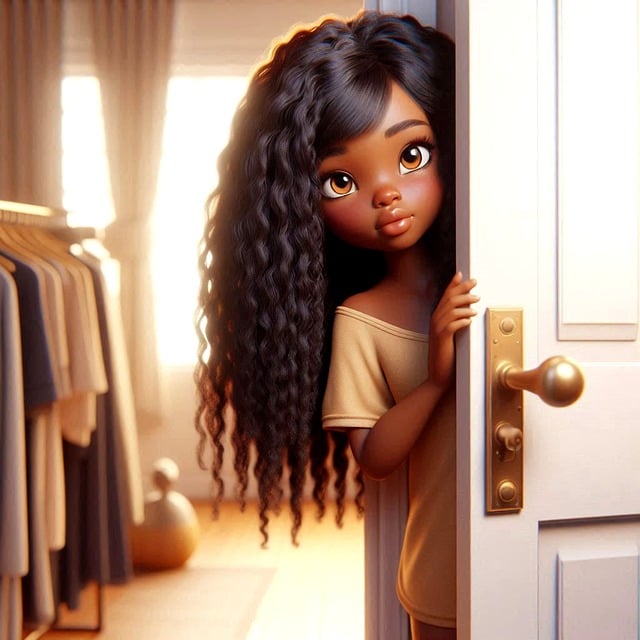Introduction
Designing a custom DIY closet allows you to optimize your space while ensuring it suits your unique storage needs and personal style.
Whether you have a small space that requires smart solutions or a large walk-in closet that you want to organize efficiently, creating your own closet design can be a rewarding project. With the right tips and tricks, you can achieve a professional-looking, functional, and stylish closet.
Here are 7 expert tips to help you design the perfect custom DIY closet that fits your needs and enhances your home.
1. Start with a Detailed Plan and Measure Carefully
Before you begin your custom DIY closet project, take time to plan and measure your space accurately. Knowing the exact dimensions of your closet will help you create a design that maximizes storage and avoids mistakes. Start by measuring the width, height, and depth of your space, and then consider how you want to organize your closet—whether it’s for clothes, shoes, accessories, or a mix of all three.
Tips for Accurate Planning:
- Use a measuring tape to get precise dimensions.
- Sketch out a rough blueprint of your closet, including shelves, hanging rods, and drawers.
- Leave enough space between sections for ease of access and movement.
Expert Tip: According to The Spruce, one of the most common mistakes in closet design is underestimating how much space you need for hanging clothes. It’s recommended to allow at least 24 inches of hanging space for longer garments. You can find more information on planning a closet at The Spruce.
2. Use Adjustable Shelving for Flexibility.
Flexibility is key when designing a custom DIY closet, especially if your wardrobe changes with the seasons. Adjustable shelving allows you to modify the layout of your closet as your storage needs change. This is particularly useful for items like shoes, handbags, and folded clothes.
Benefits of Adjustable Shelving:
- Allows you to create customizable storage for different items.
- Can be rearranged or adjusted as your needs evolve.
- Ideal for small closets that need to maximize vertical space.
How to Install:
- Use adjustable shelf brackets that allow shelves to be moved up or down.
- Install vertical tracks or standards along the walls of the closet to support the shelving brackets.
Expert Tip: Better Homes & Gardens suggests installing shelving at various heights to accommodate everything from boots to small accessories. Learn more about closet organization at Better Homes & Gardens.
3. Optimize Hanging Space for Different Clothing Types.
When it comes to designing a custom DIY closet, it’s essential to maximize your hanging space. Different types of clothing require varying amounts of vertical space, so plan accordingly. For instance, shirts and blouses need less space than dresses or long coats.
Tips for Hanging Clothes:
- Include double hanging rods (one above the other) for shirts and pants to maximize space.
- Reserve a section for long hanging garments, like dresses and coats.
- Use space-saving hangers or cascading hangers to further optimize your storage.
Expert Tip: According to ClosetMaid, a standard rod height for shirts and blouses is about 40-42 inches from the floor, while long hanging clothes may require 60-65 inches. You can read more at ClosetMaid.
4. Incorporate Drawers for Concealed Storage
Adding drawers to your custom DIY closet is a great way to keep smaller items organized and out of sight. Drawers can be used to store socks, underwear, jewelry, or other accessories, keeping them neatly tucked away while freeing up open shelf space for larger items.
Types of Drawers to Consider:
- Shallow drawers for accessories and small items.
- Deep drawers for bulkier items like sweaters or scarves.
- Pull-out trays for jewelry or watches.
Installation:
- If you’re building your own closet system, install drawer slides to create a smooth and functional opening mechanism.
- Consider soft-close slides for a more luxurious feel.
Expert Tip: Home Depot recommends adding at least one bank of drawers in a custom closet to help keep smaller items organized and easily accessible. Learn more at Home Depot.
5. Add Shoe Racks or Cubbies for Footwear Organization.
Shoes can quickly clutter up a closet, so it’s important to incorporate proper storage for them. Installing shoe racks or cubbies in your custom DIY closet ensures that your footwear stays organized, easy to find, and in good condition.
Shoe Storage Ideas:
- Slanted shoe shelves allow you to see each pair easily and maximize space.
- Cubbies keep shoes separated and prevent them from getting scuffed or dirty.
- For small closets, use over-the-door shoe organizers to save floor space.
Expert Tip: Real Simple advises arranging shoes by type and frequency of use. Everyday shoes should be stored at eye level for easy access, while special occasion footwear can be stored higher up. Read more about shoe organization at Real Simple.
6. Use Vertical Space Wisely.
In any custom DIY closet design, it’s essential to maximize vertical space. Often, the area above or below hanging clothes is underutilized, so consider adding shelving or hanging solutions to make the most of every inch.
Ways to Use Vertical Space:
- Install top shelves to store items you don’t use frequently, such as seasonal clothing, hats, or extra bedding.
- Use closet risers or tension rods to create additional hanging space under existing clothes.
- Hang hooks or pegboards on the inside of closet doors to store accessories like bags, belts, or scarves.
Expert Tip: Martha Stewart suggests keeping items you don’t use regularly in clear storage bins on top shelves, so you can easily see what’s inside without digging through boxes. Learn more about vertical storage at Martha Stewart.
7. Add Lighting to Enhance Functionality
A well-lit closet makes it easier to find what you need and keeps your closet looking clean and organized. Adding lighting to your custom DIY closet not only improves its functionality but also adds a touch of luxury.
Closet Lighting Options:
- LED strip lights can be installed along shelves or rods to illuminate your hanging clothes.
- Recessed ceiling lights or track lighting are great for walk-in closets.
- Motion-sensor lights are a convenient option, turning on when you open the closet door.
Installation Tips:
- Choose battery-operated LED lights for an easy, no-wiring option.
- Install under-shelf lighting to illuminate darker sections of the closet.
- Use warm lighting for a cozy ambiance or cool lighting for a crisp, modern feel.
Expert Tip: Lowe’s recommends installing lights inside your closet to help showcase your wardrobe and make morning routines easier. You can find more ideas on closet lighting at Lowe’s.
Conclusion.
Designing your own custom DIY closet allows you to tailor your storage to fit your specific needs, all while adding a personal touch to your space.
By incorporating adjustable shelving, maximizing vertical space, and using flexible storage solutions like drawers and cubbies, you can create a functional and aesthetically pleasing closet.
With these 7 expert tips, your custom closet will not only be practical but also stylish, helping you keep your wardrobe organized and easy to access.
Read Also: 7 simple DIY box light projects for your stunning home lighting.
FAQs
Q: How much space do I need for a custom DIY closet?
A: The size of your custom closet will depend on your storage needs, but it’s important to allow enough space for hanging clothes, shelves, and drawers. A well-planned design ensures you can make the most of a small or large closet.
Q: What is the best material to use for a custom DIY closet?
A: Wood and laminate are popular choices for custom closets due to their durability and ease of customization. Wire shelving is another option for a more open, airy feel.
Q: How do I organize a small custom DIY closet?
A: For small closets, focus on using vertical space, adding adjustable shelving, and incorporating hanging solutions. Use hooks, risers, and multi-purpose hangers to maximize space.
Q: Can I install lighting in my custom DIY closet without wiring?
A: Yes, there are battery-operated LED lights that are easy to install and don’t require any electrical wiring. These are great for closets without existing light fixtures.
Q: Should I add doors to my custom DIY closet?
A: It depends on your preference. Open closets can give easy access to clothes and create a more open feel, while doors can help hide clutter and make the room look more polished.


